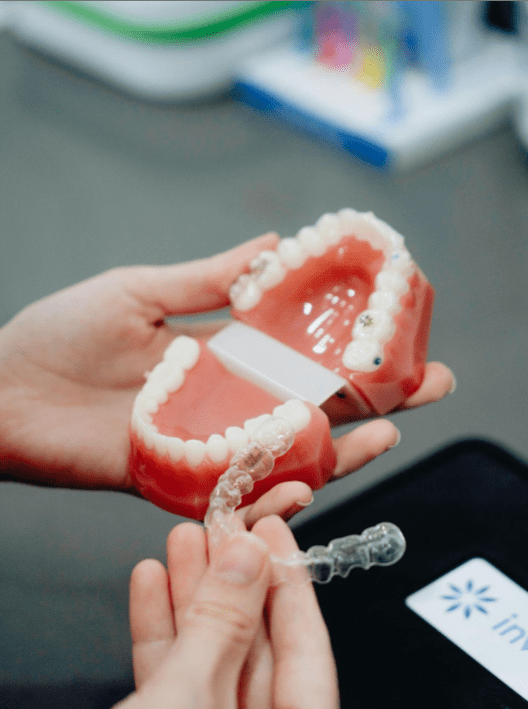Mastering Tirzepatide: Simple Strategies for Better Results and Fewer Side Effects
Three weeks ago, you started tirzepatide with such excitement. Your doctor explained how this dual action medication works on both GLP-1 and GIP receptors, potentially offering even better results than other weight loss medications you’d heard about. The first few days delivered on the promise. Food suddenly seemed less interesting. The mental noise about what to eat next finally quieted down. You noticed yourself leaving food on your plate without that nagging voice telling you to finish everything. Then reality hit harder than expected. The nausea arrived with a vengeance. Your stomach felt perpetually full and uncomfortable. That slice of pizza you used to enjoy sat like cement in your gut for what felt like forever.
Here’s what nobody warned you about: the medication working exactly as intended can feel absolutely terrible if you don’t adjust how you live alongside it. Tirzepatide slows your digestion dramatically as part of its mechanism for weight loss. Your appetite drops because food lingers longer in your system. These effects are features, not bugs, but they require you to fundamentally rethink your eating patterns, food choices, and daily habits. The difference between people who thrive on tirzepatide and those who suffer through every dose often has nothing to do with the medication itself and everything to do with the lifestyle adjustments they make or don’t make.
This guide exists to help you become one of the people who thrives. We’re going to walk through practical, actionable strategies that work with tirzepatide’s unique effects rather than fighting against them. You’ll learn how to eat in ways that prevent nausea and discomfort, how to protect your hard earned muscle while losing fat, how to optimize your nutrition even when appetite disappears, and how to set realistic expectations that keep you motivated rather than discouraged. Because losing weight shouldn’t mean feeling miserable for months on end, and with the right approach, it doesn’t have to.
Mastering the Art of Smaller, Smarter Meals
The most common mistake people make when starting tirzepatide is continuing to eat the same portion sizes they’ve always eaten. Your brain knows what a normal meal looks like. Your eyes are accustomed to certain amounts of food on your plate. Your habits around breakfast, lunch, and dinner are deeply ingrained after years or decades of repetition. But tirzepatide has fundamentally changed the game. Because it dramatically slows how quickly your stomach empties, that amount of food that used to feel perfectly reasonable now overwhelms your digestive system. The result? Hours of uncomfortable fullness, waves of nausea, and potentially vomiting if you’ve really overdone it.
The solution requires a complete mental shift about what eating looks like on a daily basis. Instead of three standard meals, think about fueling your body with five to seven smaller eating occasions spread throughout your day. This isn’t about restricting yourself or going hungry. It’s about matching food volume to your body’s reduced processing capacity. Each eating occasion should be modest in size, maybe a third to half of what you used to consider a meal. The goal is providing your body with steady nutrition and energy without overwhelming the slower digestive process that tirzepatide creates.
Practical implementation means planning ahead and keeping your space stocked with options that work. Think about combinations that deliver nutrition without complexity. A couple of scrambled eggs with berries on the side takes minutes to prepare and provides protein, healthy fats, and natural sugars your body can use. Hummus with cucumber slices and whole grain crackers offers fiber, protein, and satisfying crunch. A small smoothie blended with protein powder, spinach, frozen banana, and almond milk packs nutrition into an easily digestible form. Cottage cheese topped with cherry tomatoes and everything bagel seasoning creates a savory option when sweet foods don’t appeal. The key is having these components readily available so that when hunger arrives, you can respond quickly with appropriate portions rather than either skipping meals because preparation seems overwhelming or eating whatever’s convenient in amounts that make you sick.
Slowing Down and Tuning In
Most of us learned to eat quickly somewhere along the way. Maybe you grew up in a busy household where meals happened fast between activities. Perhaps your work culture involves eating lunch at your desk while responding to emails. You might have young children and learned to shovel food in during the brief windows when they’re occupied. Whatever the origin, fast eating has become your default, and on tirzepatide, that default will make you feel terrible. When you eat rapidly, bite after bite without pausing, your stomach fills faster than your brain can process what’s happening. By the time satiety signals reach your consciousness, you’ve already consumed far more than your slowed digestive system can comfortably handle.
Mindful eating offers a completely different approach that works beautifully with tirzepatide’s effects. This practice centers on bringing full awareness to your eating experience, engaging with your food intentionally rather than unconsciously. Begin by creating an environment conducive to attention. Sit down at an actual table rather than standing at the counter or eating in your car. Turn off the television, put your phone across the room, and close your laptop. These distractions pull your attention away from your body’s signals and before you know it, you’ve eaten an entire meal without actually experiencing any of it. Look at what you’re about to eat. Notice the colors, the arrangement, the aroma. Take your first bite and chew it thoroughly, actually tasting the flavors and noticing textures as they change in your mouth. Swallow completely before reaching for the next bite.
This deliberate pace serves multiple purposes beyond just preventing overeating. When you slow down, you often discover that satisfaction arrives sooner than expected. Your brain needs approximately twenty minutes to fully register fullness signals from your stomach, and eating slowly allows that communication to happen in real time rather than after you’ve already overeaten. You also tend to enjoy your food more when you actually taste it, which means smaller portions can feel genuinely satisfying rather than deprivingly small. Start practicing mindful eating with just one meal each day. Maybe dinner works best because you have more control over timing and environment. As the practice becomes more natural, expand it to other eating occasions. You’ll be amazed at how much this single shift improves both your comfort level and your results.
Making Strategic Decisions About What You Consume
Certain substances and foods interact particularly problematically with tirzepatide, and understanding these interactions helps you make informed choices about what to consume. Alcohol stands out as especially troublesome. Even in people not taking medication, alcohol irritates stomach lining and interferes with normal digestion. Add tirzepatide’s significant slowdown of gastric emptying, and alcohol sits in your system much longer, increasing irritation and discomfort exponentially. The blood sugar effects become more unpredictable too. Tirzepatide improves insulin response and regulates glucose, but alcohol can cause dangerous drops in blood sugar, and combining these effects requires caution. Some people report that tirzepatide naturally reduces their interest in drinking, which makes limiting alcohol effortless. If that’s your experience, embrace it as a positive bonus. If you still want to drink, understand that moderation becomes even more important, and you may find that even small amounts of alcohol produce uncomfortable effects you didn’t experience before starting medication.
Water intake demands intentional focus when taking tirzepatide. The medication’s appetite suppressing effects sometimes extend to reduced thirst perception, meaning you might not feel prompted to drink even though your body desperately needs fluids. Dehydration worsens nausea significantly, creating a vicious cycle where feeling sick makes drinking less appealing, but not drinking makes you feel even sicker. Break this cycle by treating hydration as a scheduled task rather than waiting for thirst cues. Keep a water bottle within reach throughout your day and set phone reminders if needed. Aim for small, frequent sips rather than trying to gulp large amounts, which can increase fullness and nausea. If plain water doesn’t tempt you, experiment with ways to make hydration more appealing. Herbal teas in dozens of flavors provide variety and can be enjoyed hot or iced. Infusing water with sliced citrus, fresh mint, or cucumber adds subtle taste without sugar or artificial ingredients. Naturally flavored sparkling water offers fizz and flavor for those who find carbonation satisfying.
Your food selections directly impact how comfortable you feel after eating. Foods high in fat, particularly saturated and trans fats found in things like pizza, burgers, fried chicken, ice cream, and rich sauces, take substantially longer to digest even under normal circumstances. On tirzepatide, these foods can cause prolonged discomfort that lasts for hours or even into the next day. Similarly, foods loaded with added sugars or concentrated natural sugars like dried fruit can trigger digestive upset and blood sugar fluctuations when consumed in anything more than very small quantities. This doesn’t mean these foods are permanently forbidden, but it does mean eating them requires thoughtfulness about portions and timing, along with honest assessment of whether the temporary enjoyment is worth the potential hours of discomfort afterward. Build your regular eating patterns around foods that digest more easily: vegetables that aren’t starchy, fresh fruits in their whole form, dairy products that are lower in fat, and proteins that are lean. These nutrient rich options provide what your body needs without triggering the side effects that make you dread eating. Remember that individual responses vary significantly, so pay attention to your own patterns and discuss personalized nutrition guidance with a healthcare provider or registered dietitian familiar with your situation.
Preserving Muscle Mass During Weight Loss
One of the most critical yet overlooked aspects of weight loss with tirzepatide is ensuring you lose fat rather than muscle. When the medication dramatically reduces appetite and eating feels more like a chore than pleasure, many people naturally cut their food intake substantially. Creating a caloric deficit is necessary for weight loss, that’s simple thermodynamics. But slashing calories too aggressively, particularly protein calories, sends signals to your body that food is scarce. In response, your body starts breaking down muscle tissue for energy, trying to reduce its caloric needs to match what you’re providing. This muscle loss creates multiple problems beyond just the number on the scale.
Muscle tissue is metabolically active, burning more calories at rest than fat tissue does. When you lose muscle, your metabolic rate drops, making it progressively harder to lose weight and easier to regain it once you stop the medication. Muscle also provides the strength you need for daily activities, from carrying groceries to playing with children to maintaining balance and preventing falls as you age. Additionally, muscle contributes to the aesthetic result most people envision when they imagine their goal body. Without adequate muscle, you might reach your target weight but still feel soft or undefined rather than toned and strong. Losing fat while maintaining or even building muscle creates the transformation most people actually want.
Protecting muscle requires prioritizing protein at every opportunity, even when eating feels unappealing. Every eating occasion should include a protein source, whether that’s a full meal or a small snack. Chicken breast, turkey, lean beef, and pork tenderloin provide complete proteins with all essential amino acids your body needs. Fish like salmon, tuna, and cod offer protein along with beneficial fats. Eggs are incredibly versatile, affordable, and nutritious. Plant based sources like beans, lentils, tofu, and tempeh work well for those preferring vegetarian options. Greek yogurt and cottage cheese deliver substantial protein in forms that many people find easier to tolerate when dealing with nausea. Aim for roughly 0.8 to 1.2 grams of protein per pound of your goal body weight, understanding that individual needs vary based on activity level, age, and other factors. If meeting protein targets through whole foods feels impossible due to reduced appetite, high quality protein powder mixed into smoothies, stirred into oatmeal, or blended into yogurt can help fill the gap.
Strength training provides the second essential component of muscle preservation. While tirzepatide helps create the caloric deficit needed for weight loss, your exercise choices largely determine what type of tissue you lose. Without resistance training, research shows that 20 to 30 percent of weight lost can come from muscle rather than fat. With consistent strength training, your body receives clear signals to preserve and even build muscle while preferentially using fat stores for energy. You don’t need fancy equipment or expensive gym memberships. Bodyweight exercises like push ups, squats, lunges, and planks provide effective resistance using just your own body. Resistance bands offer portable, affordable options for adding challenge. Dumbbells or kettlebells at home work perfectly well. The specific method matters less than consistency. Aim for strength training at least twice per week, targeting all major muscle groups over the course of your weekly sessions. Start with whatever feels manageable given your current fitness level and build gradually as you get stronger. Even modest strength training makes a dramatic difference in your body composition and how you look and feel as weight comes off.
Moving Your Body and Setting Sustainable Goals
Physical activity contributes to weight loss success in multiple ways beyond just burning calories. Exercise strengthens your cardiovascular system, reducing risk for heart disease, stroke, and numerous other conditions. Movement improves mood by releasing endorphins and reducing stress hormones like cortisol. Regular activity helps regulate blood sugar and improves insulin sensitivity, which works synergistically with tirzepatide’s metabolic effects. Interestingly, movement can even help alleviate some of the digestive discomfort that tirzepatide causes, with gentle activity helping move gas through your system and reducing bloating. You don’t need to become an athlete or spend endless hours working out. Any movement that increases your heart rate and engages your muscles counts as beneficial exercise.
The secret to consistent exercise is finding activities that you genuinely enjoy or at least don’t actively hate. Forcing yourself to do exercises you despise guarantees inconsistency. If you hate running, don’t run. Try brisk walking instead, which provides excellent cardiovascular benefits without the impact or intensity some people find miserable. Swimming offers full body exercise with zero impact on joints. Cycling, whether outdoor or stationary, works well for people who enjoy that motion. Dance classes combine music, social interaction, and movement in ways many people find fun rather than punishing. Even activities you might not consider traditional exercise absolutely count: gardening involves bending, lifting, and sustained activity; thorough house cleaning gets your heart rate up and burns calories; playing actively with children or pets keeps you moving. The best exercise is whatever you’ll actually do regularly, so prioritize finding what feels sustainable for your personality, schedule, and preferences rather than what seems theoretically optimal.
Setting realistic weight loss expectations prevents frustration and helps maintain a healthy approach throughout your journey. Tirzepatide produces impressive results for many people, with clinical trials showing average weight loss around 15 to 20 percent of body weight over extended treatment periods. However, losing weight too rapidly creates risks including excessive muscle loss, loose skin that doesn’t adjust to your changing body, reduced bone density, and potential nutritional deficiencies if intake drops too low. For most people, losing one to two pounds per week represents a healthy, sustainable pace that maximizes fat loss while minimizing these negative effects. Some weeks you’ll lose more, particularly early in treatment or after dose increases. Other weeks you’ll lose less or maintain the same weight despite perfect adherence. Weight loss follows an overall downward trend but rarely a smooth, linear path.
Factors beyond your control significantly influence your rate of weight loss. People starting at higher weights typically lose faster than those closer to normal weight ranges. Younger individuals often see quicker results than older adults whose metabolisms have naturally slowed. Men frequently lose weight faster than women due to differences in body composition and hormones. Someone who’s never dieted before may lose faster than someone whose body has adapted to repeated weight loss and regain cycles. These variations reflect biology, not personal success or failure. Comparing your timeline to someone else’s or to idealized expectations only leads to unnecessary frustration. Instead, focus on your individual progress, celebrate non scale victories like improved energy and better fitting clothes, and trust that consistency with healthy habits will produce results even if they don’t match someone else’s experience. Always discuss your specific goals and progress with your healthcare provider, who can help you determine whether your pace is appropriate and healthy for your individual circumstances.
Creating Your Success Story
Taking tirzepatide opens a door to weight loss that may have felt permanently closed before. The medication’s unique dual action on GLP-1 and GIP receptors makes it a powerful tool for reducing appetite, improving blood sugar regulation, and supporting sustainable weight reduction. But walking through that door successfully requires more than just taking your weekly injection. It requires understanding how the medication affects your body and making intentional lifestyle choices that work with those effects rather than against them. Managing side effects through smaller portions and mindful eating transforms your experience from miserable to manageable. Prioritizing protein and incorporating strength training protects your muscle and metabolism. Staying properly hydrated and making thoughtful food and beverage choices supports your digestive comfort and energy. Moving your body regularly benefits both physical health and mental wellbeing. Setting realistic goals and celebrating progress keeps you motivated for the long journey ahead.
None of these strategies requires perfection, and trying to be perfect will only exhaust and frustrate you. This is about progress, experimentation, learning what works for your unique body, and building sustainable habits that will serve you long after you’ve reached your weight loss goals. Some days will feel easy, like everything is clicking and the path forward is clear. Other days will feel hard, like nothing works and you’re failing at everything. Both experiences are completely normal parts of this process. What matters most is showing up consistently, making the next right choice, and refusing to let temporary setbacks derail your overall trajectory. You’re learning skills that extend far beyond weight loss: tuning into your body’s signals, honoring your needs, working with your biology rather than fighting it, and persisting through challenges instead of giving up when things get difficult.
You’re not just losing weight on this journey. You’re reclaiming your health, building confidence in your ability to navigate challenges, and proving to yourself that sustainable change is possible. You’re developing a more balanced relationship with food, movement, and your body. You’re learning that feeling good while losing weight isn’t just possible but actually the goal. Because you deserve to feel energized, comfortable, strong, and proud throughout this entire process, not just when you finally hit some arbitrary number on the scale. Every small choice you make, every meal eaten mindfully, every workout completed, every glass of water consumed contributes to the bigger picture of your transformation. Trust yourself, be patient with the process, and remember that the path forward is built one day, one choice, one small change at a time.
Thank you for spending this time learning how to make your tirzepatide experience as successful and comfortable as possible. I hope these strategies give you practical starting points you can implement immediately. For more wellness guidance, weight loss support, and finding magic in everyday moments, explore the rest of Nevermore Lane. And whenever you want to share your experiences or just need some encouragement, join me for coffee. There’s always a cozy spot waiting and genuine support ready whenever you need it. You’re capable of more than you realize, and I’m here cheering you forward every single step.
Like what you read? Drop me a line – let’s chat over virtual coffee.
~ Chrystal






